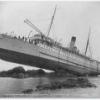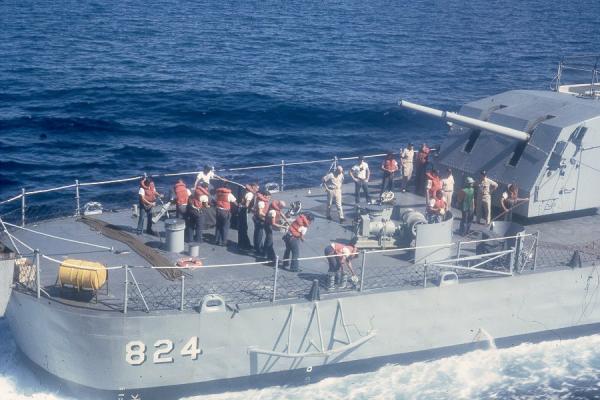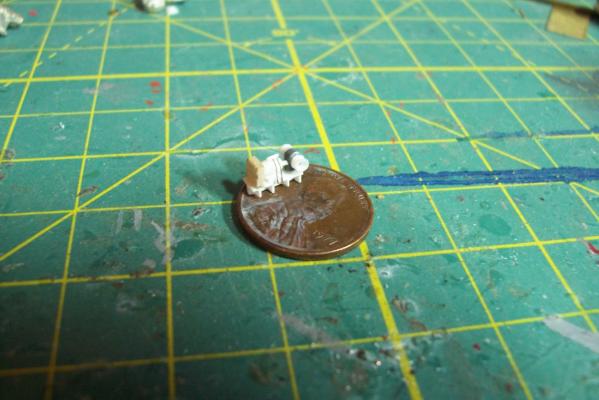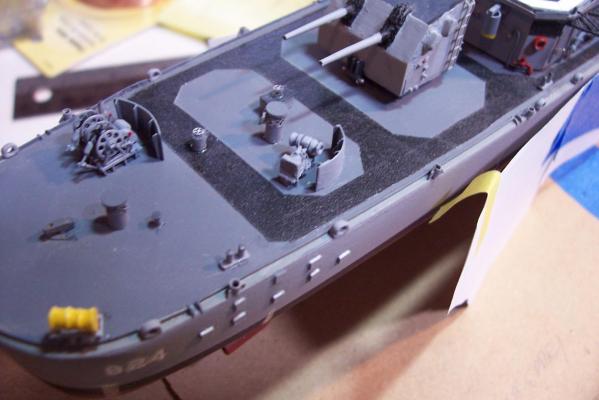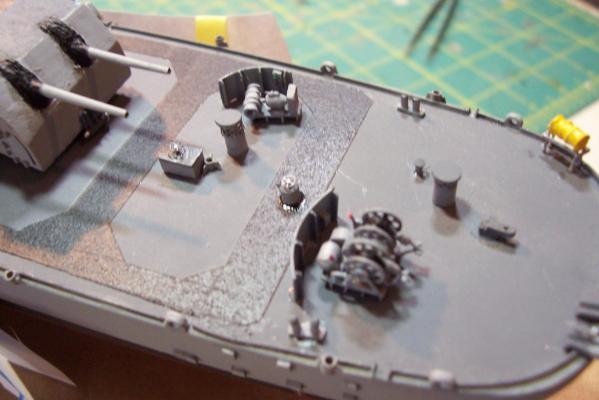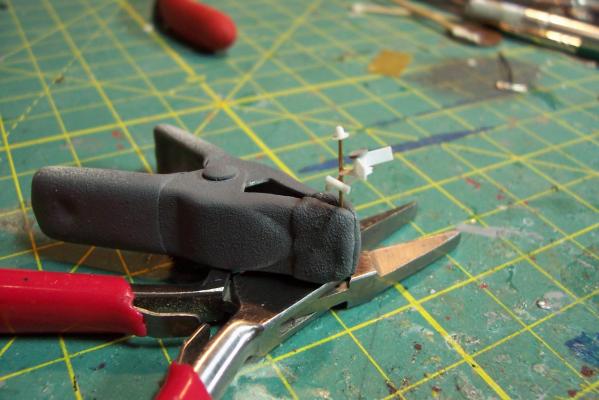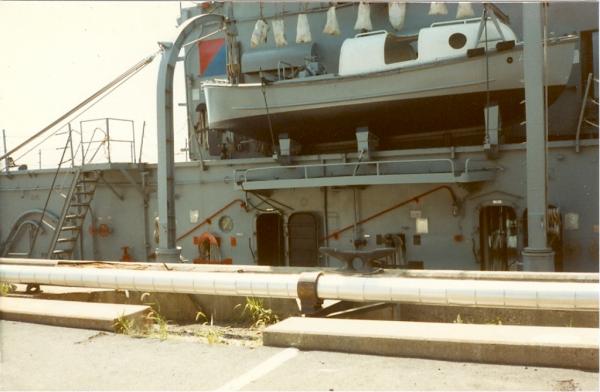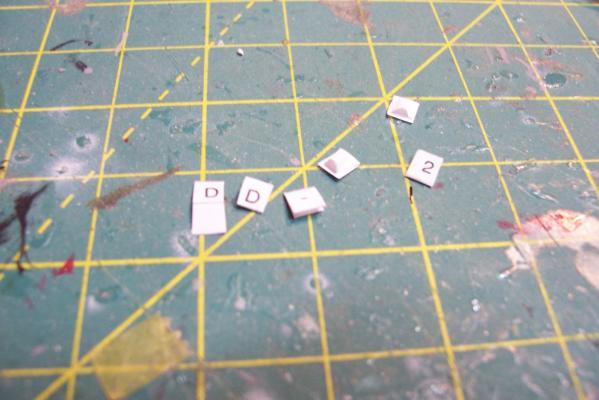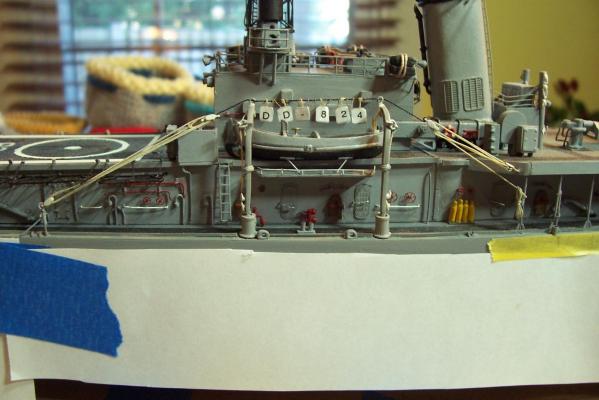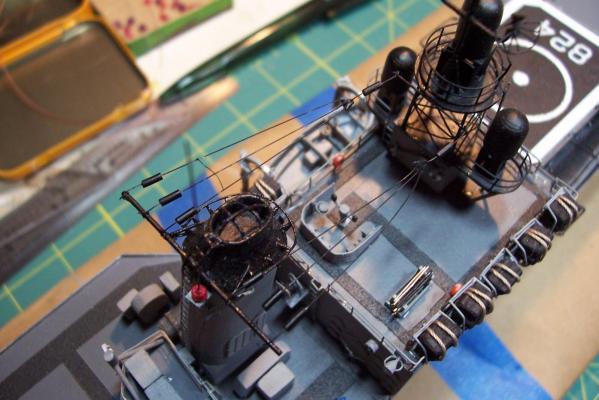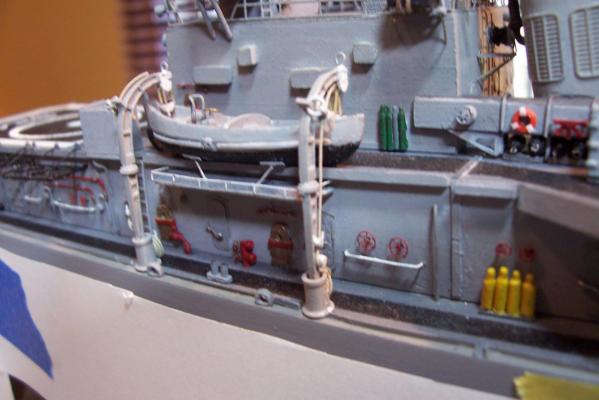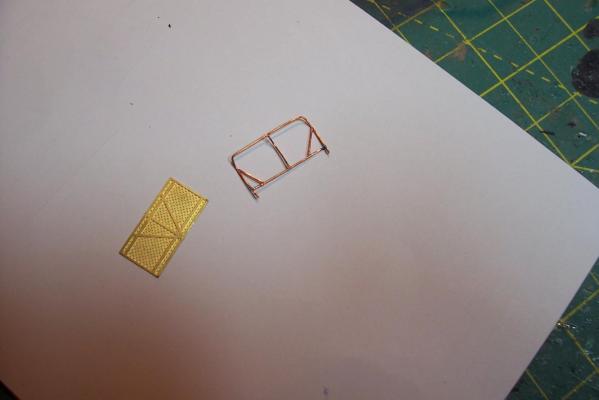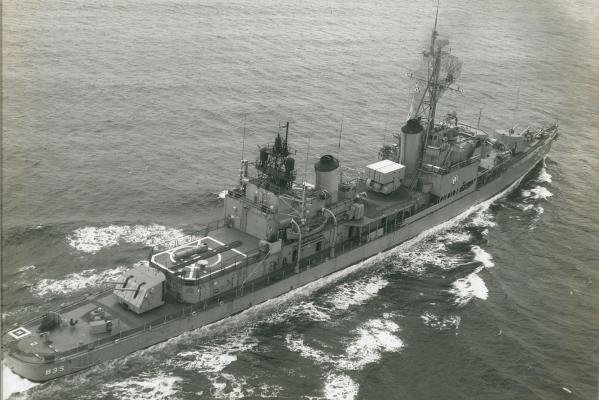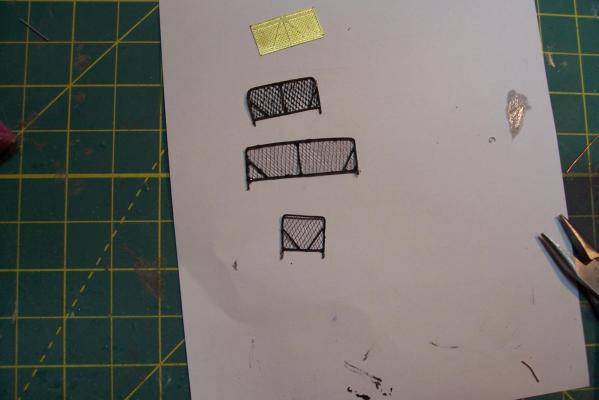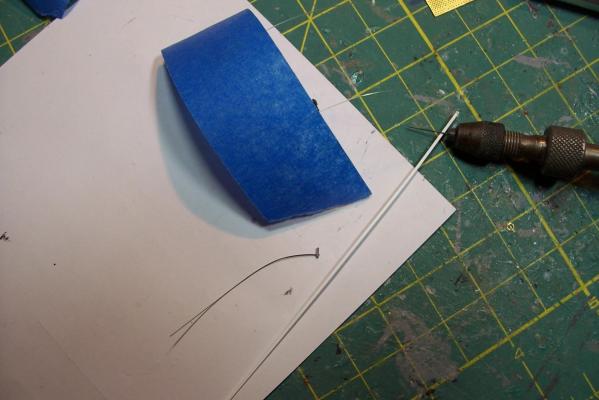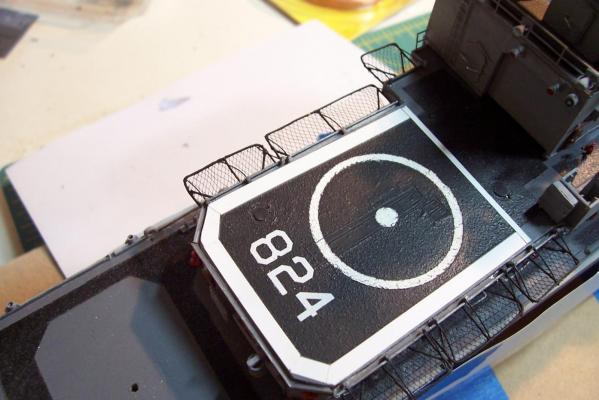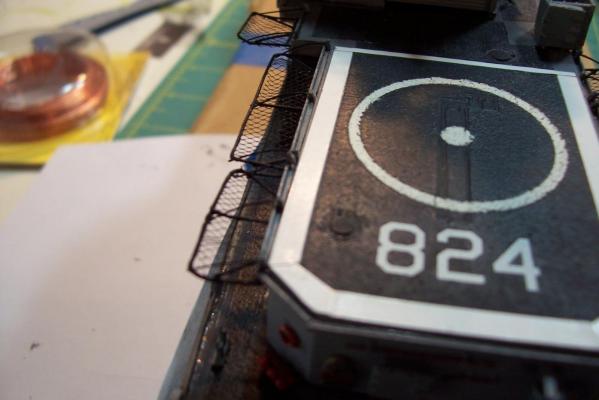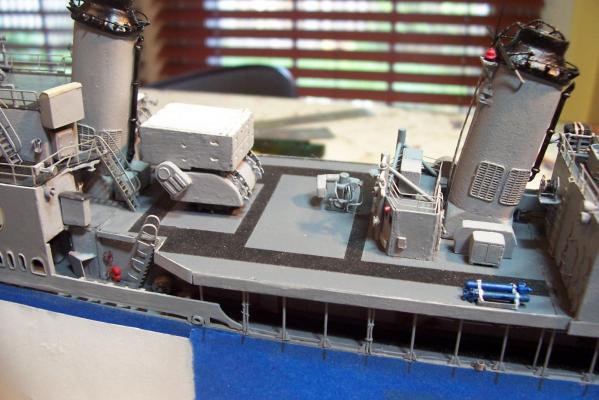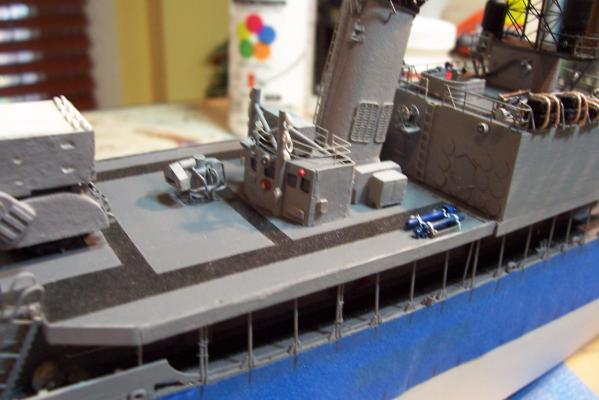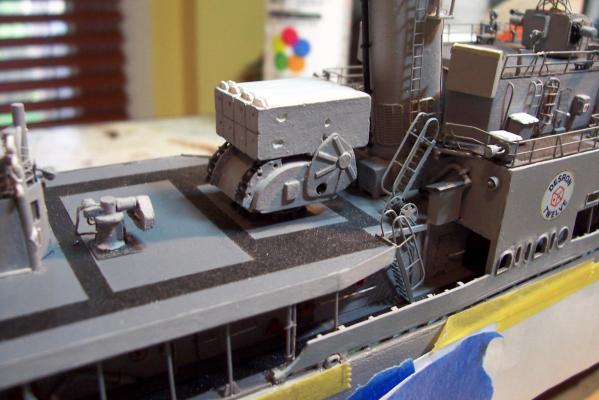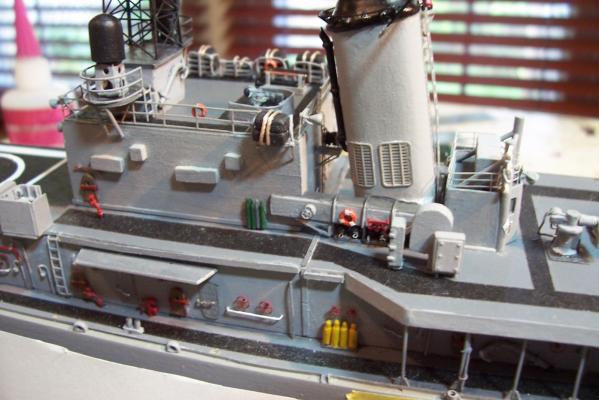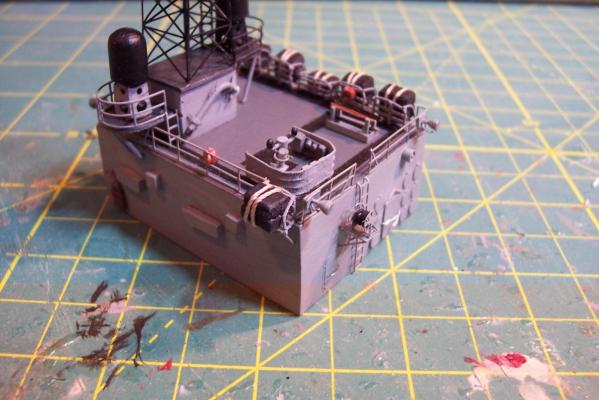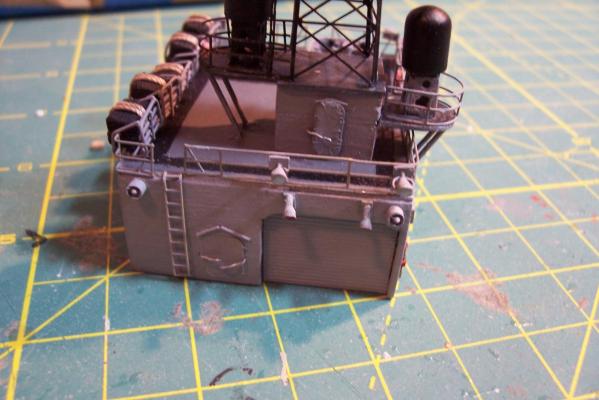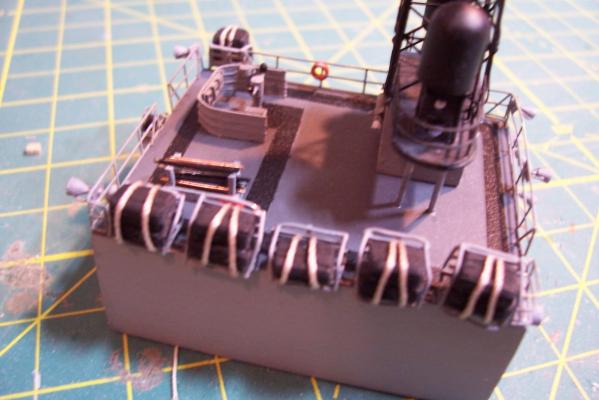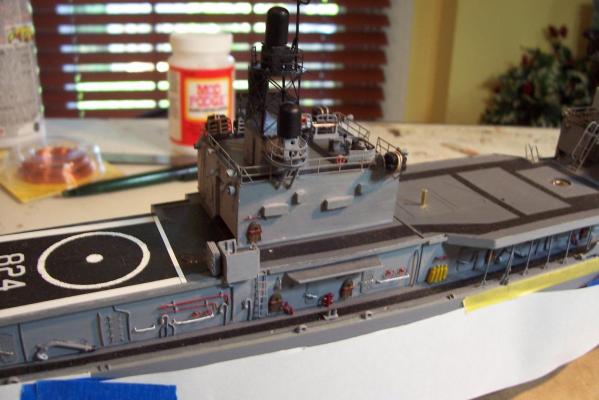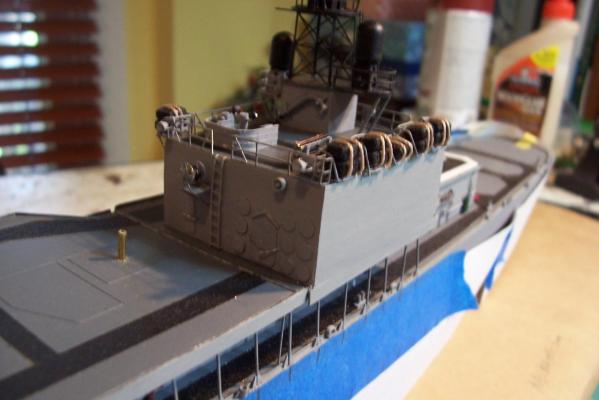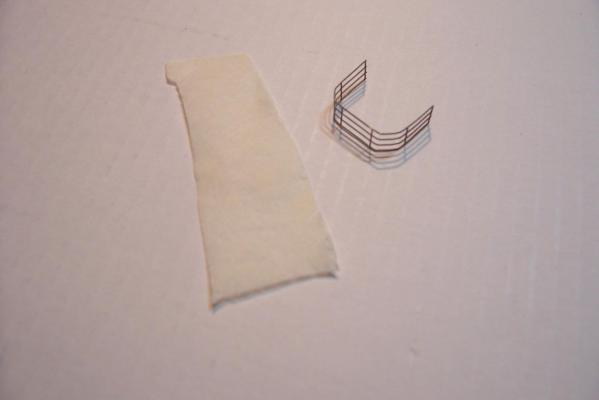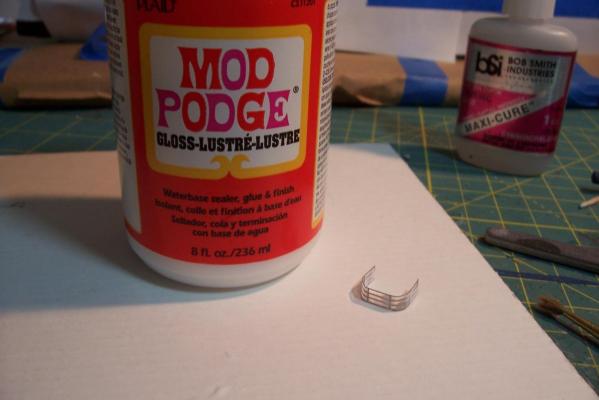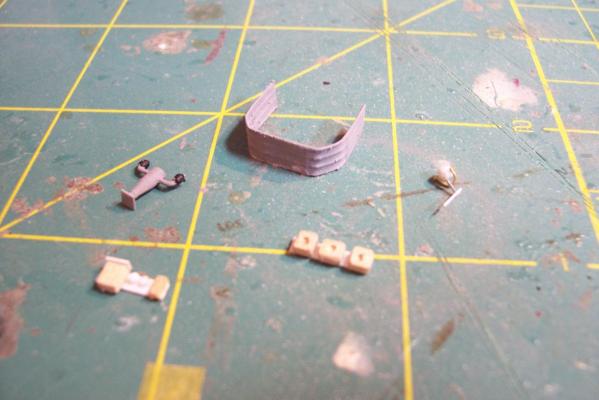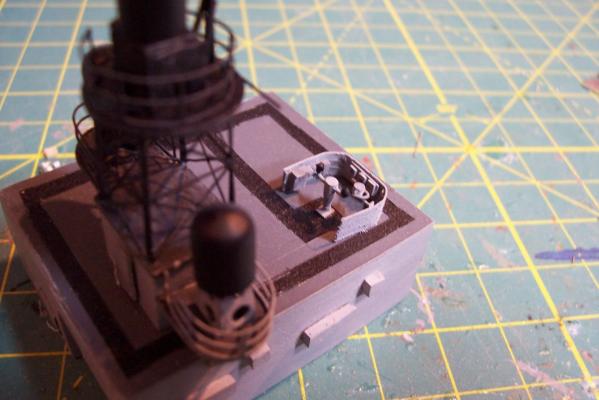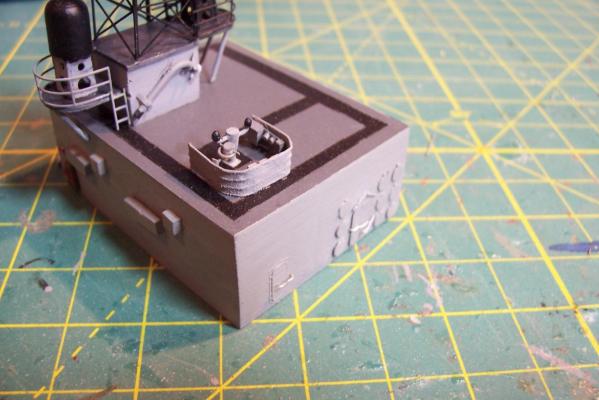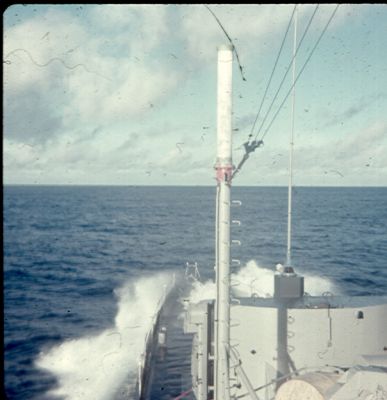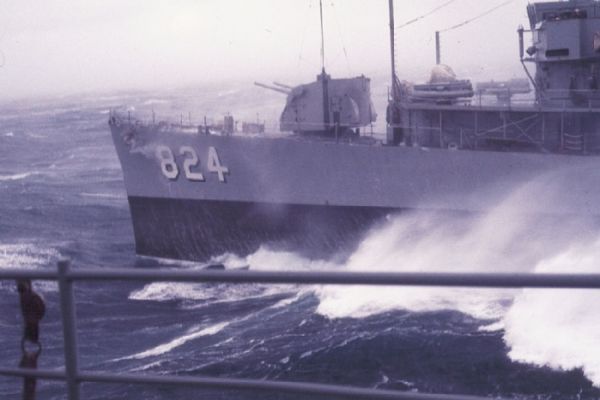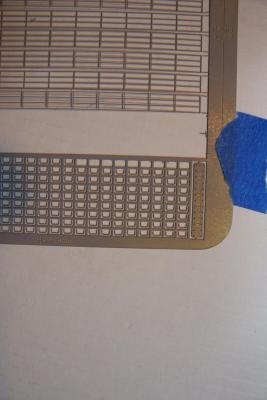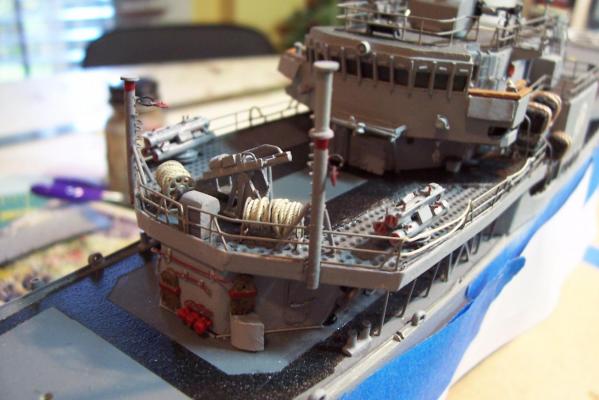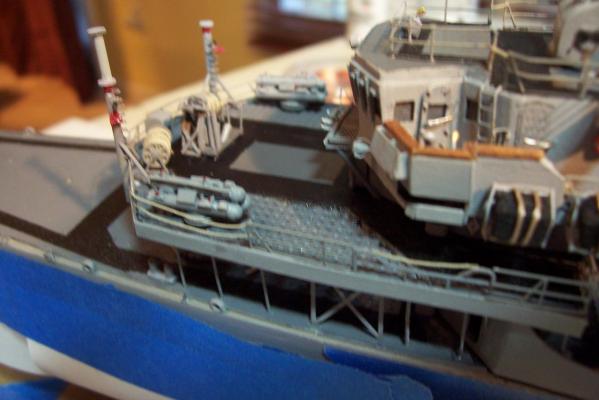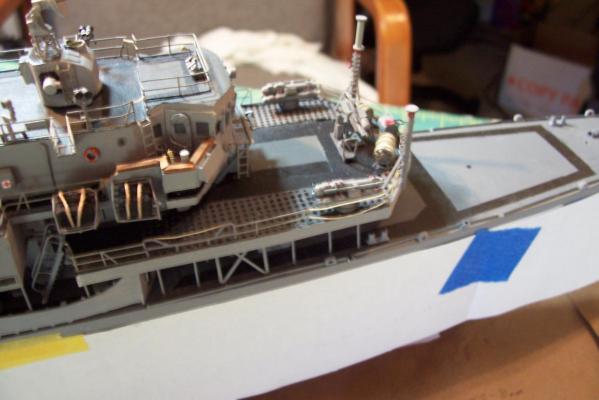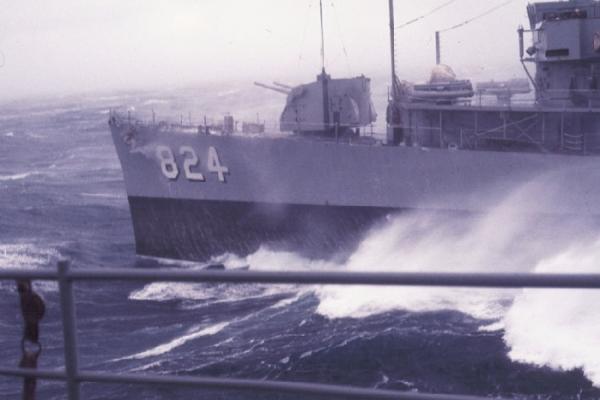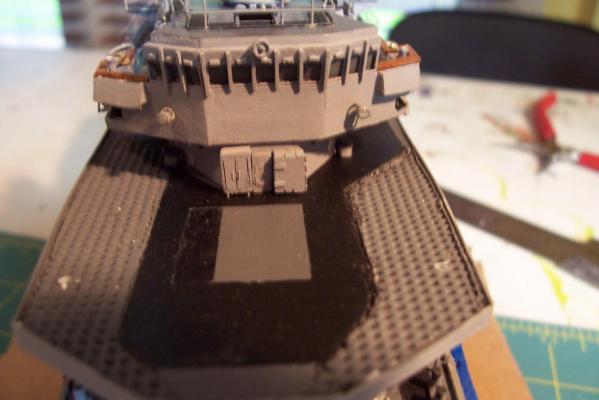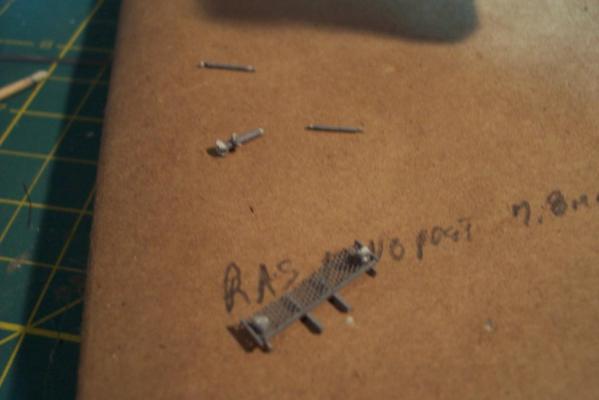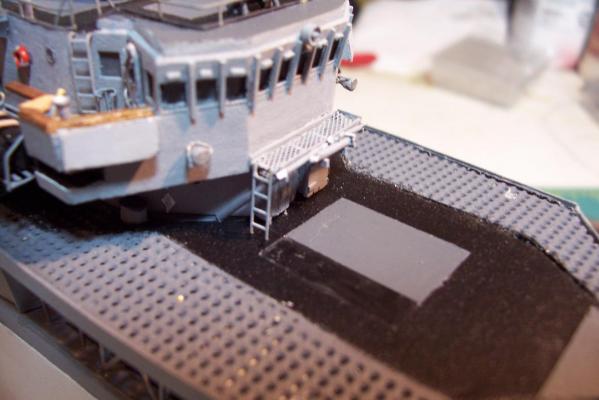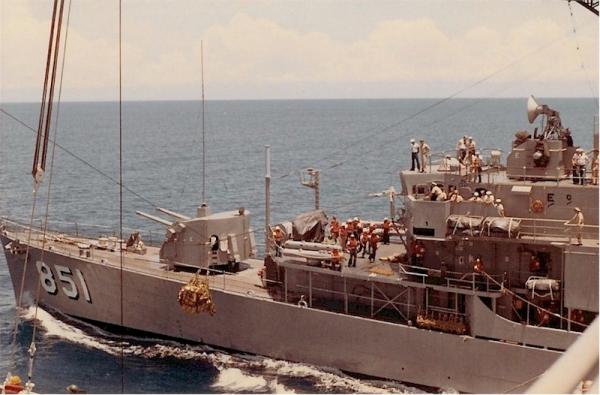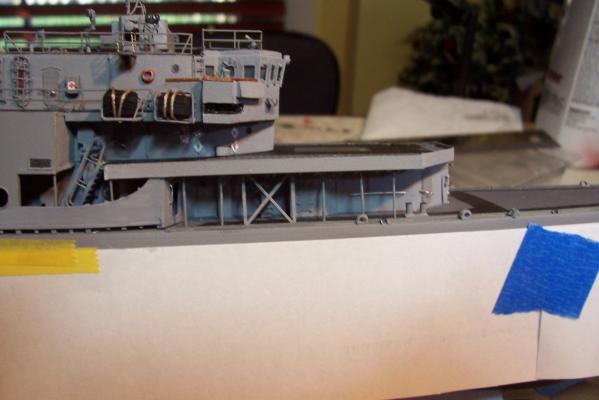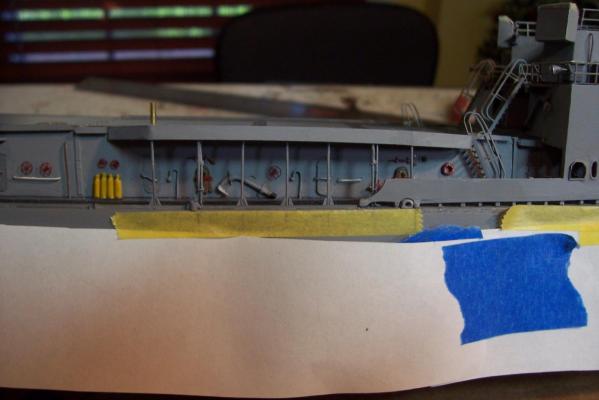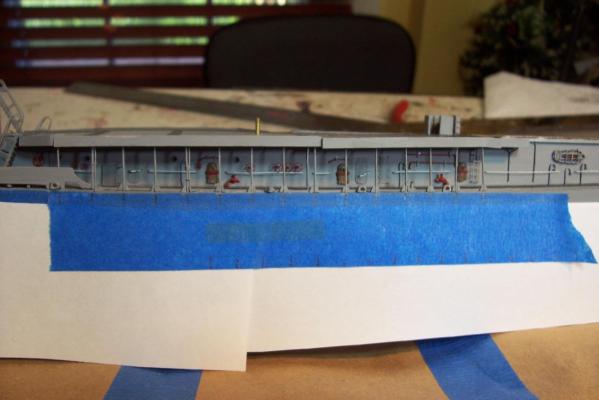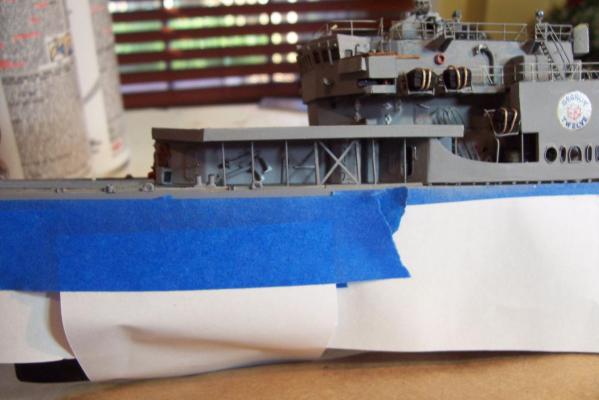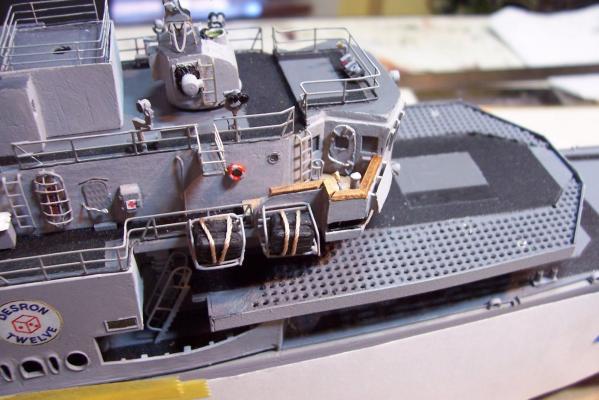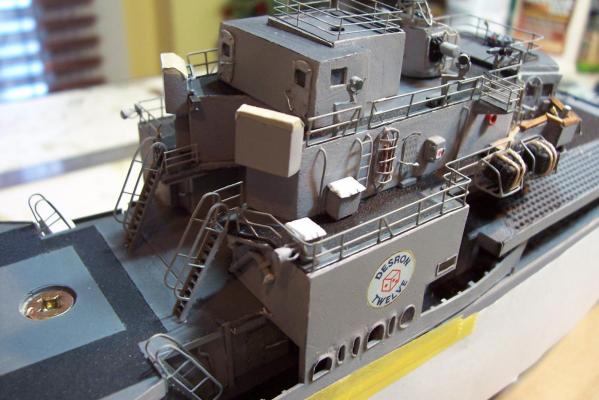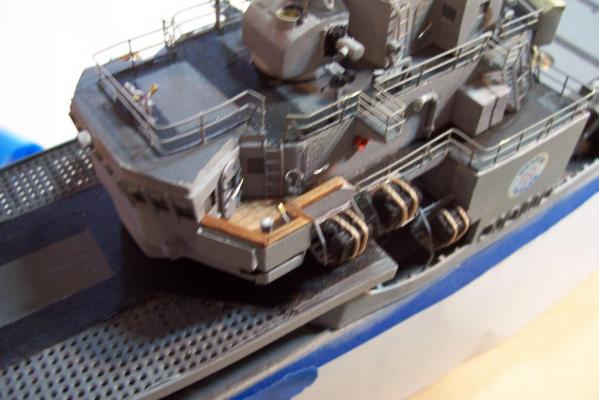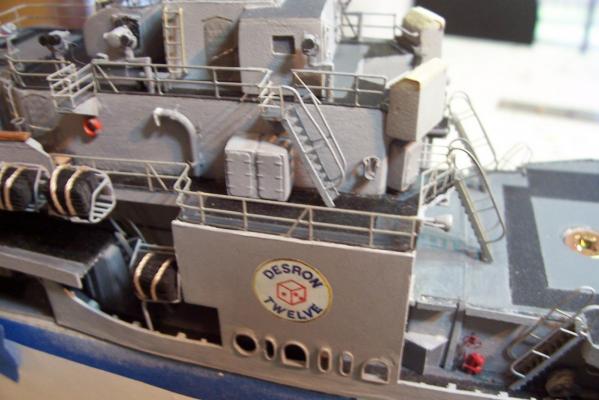-
Posts
739 -
Joined
-
Last visited
Content Type
Profiles
Forums
Gallery
Events
Everything posted by schooner
-
Mark, It is definitely a 55 gal drum. I'm 99% sure it contained gasoline for use in the portable firefighting and dewatering pumps. Gasoline aboard ship is liquid death and the USN avoids it whenever possible and always stores it on the weather decks. The photo was provided to me by a Basilone sailor who was able to identify several of the folks in it, kind of brought it to life a little. As far as the "khakis" not wearing life jackets it is the old story of "do as I say not as I do" - some things never change.
- 144 replies
-
- basilone
- BlueJacket Shipcrafters
-
(and 2 more)
Tagged with:
-
Thanks for the kind words Per. Scratching details on a modern ship is easy since there are so many photos online. Your America is coming along beautifully, very crisp and sharp . Not many models, mine included, can handle the pitiless eye of high resolution photos but yours' certainly does.
- 144 replies
-
- basilone
- BlueJacket Shipcrafters
-
(and 2 more)
Tagged with:
-
Fantail Details Basilone’s fantail was pretty cluttered with winches, hatches, vents etc …. I scratched most of the details like the boat winch: The bits, bollards, and horizontal hatch are kit supplied. The stern light array, winches and their bulwarks, vents, towing pad eye and the 55 gal drum and jettison rack are from scratch. The only items left to add to the fantail are the lifelines and the prop guards. One item I decided to leave off is visible just to the left of the 55 gal drum in the first pix - a large and ugly garbage chute.
- 144 replies
-
- basilone
- BlueJacket Shipcrafters
-
(and 2 more)
Tagged with:
-
Whaleboat Davits (cont) Home repairs, travel and trout trout fishing have proved a big distraction so it’s time to try to catch up. I wanted to show the MWB with the “Monkey Line” bags which held knotted lines that the boat crew would hold onto during the raising and lowering of the boat in case of a sudden drop. They often spelled out the ship’s name or hull number. Here’s what they looked like: I printed them out on paper, folded them and glued the back and front together with the top open and shaped with a toothpick to hold them open. Here’s the final product with the davit vangs rigged:
- 144 replies
-
- basilone
- BlueJacket Shipcrafters
-
(and 2 more)
Tagged with:
-
I really enjoyed Model Shipways Chesapeake Skipjack "Willie L. Bennett". You build the model the same way the original boats were, the plans allow for all the interior detailing, deck beams, etc. The only deviation from the real thing is the use of ply sheet for the side planks although the plans show the planks and it would be easy to make your own. The plan sheet is very detailed and the instruction book is the best I have seen - it even includes drawings of the complicated steering gear if you have the skills and desire to scratch your own. When you are done with the kit you will have a Masters in Skipjack construction.
-
Hi Ben, This looks like it will be a great build. Do you happen to know if the E.F. was built on traditional ways or in dry dock and then floated out? I'm curious because she seems pretty big to handle the dynamic stresses of launching on ways. Just wondering. As far as the resin flaws go I have done a few small kits and have found that resin is much like wood in that you can glue a piece of poly into the gap and then carve and sand it to shape. Looks like scratching a new pilot house is doable. If you find the hull is warped I recommend you check out some of the plastic ship modeling sites like Steelnavy and ModelWarships, folks on their forums can give you some great tips on how to straighten it out (it's a fairly common problem) Good luck with the build! Tim
- 40 replies
-
- edmund fitzgerald
- iron shipwrights
-
(and 1 more)
Tagged with:
-
Fan Antennas With a lot of home renovations going on lately it has been tough to find some modeling time - hopefully the hurricane will keep me indoors and at loose ends long enough to get some more done. The Gearings had several sets of 3-wire HF fan antennas. I decided to do the ones between the aft stack and ECM tower now so I didn’t whack something trying to reach that area later. The wires are made from thin flyfishing leader material. It took a long time to track down something to use for the insulators. I tried some glass beads (shown on left below) but they were over scale. I then though of using insulated wire whose insulation material I could slide over the “wire” to simulate the insulators but after striking out at several electrical supply shops I found some online. It was cheap but the necessary wire stripper was not. After stripping off a length of insulation I cut it to length. The piece in the middle below was OK but going down one more size in wire gage diet the trick: The “fish plates” where the wires join is just a piece of strip plastic with small holes drilled in it. The connecting wires (not sure of the technical name) is just a strand of the copper wire whose insulation I had used. Pix of the antennas before and after painting:
- 144 replies
-
- basilone
- BlueJacket Shipcrafters
-
(and 2 more)
Tagged with:
-
Thanks for looking in Martin. I'm close behind you for eyesight but working in a scale like 1/192 sure beats 1/350 for helping with that. Tim
- 144 replies
-
- basilone
- BlueJacket Shipcrafters
-
(and 2 more)
Tagged with:
-
Whaleboat Davits After a too long break for vacation, home repairs, and trying to tease out a final few trout before the heat sets in its about time to get back to the model. The MWB has been set in place, keel rests scratched and the davits rigged. The “falls” between the blocks are just painted fly line since it would have been beyond my patience and skills to try to fit working double blocks in such a small space. Next will be an attempt to rig monkey lines above the boat and rig the guy wires on the radial davit arms.
- 144 replies
-
- basilone
- BlueJacket Shipcrafters
-
(and 2 more)
Tagged with:
-
Flight Deck Nets The kit provides some nice PE safety nets for the sides of the flight deck (they were not added to the aft part of the flight deck until several years after the time I am depicting). The instructions call for installing them in the raised (vertical) position but since I will show the DASH on the deck I chose to mount them in the lowered (horizontal) position, which would require some modifications. Since PE is inherently thin if viewed side-on the PE would appear under-scale for thickness. I decided to line the PE nets with brass wire to give them more depth: But after making the wire frame I thought I might try adding my own netting using some fine plastic netting from the craft store (I think it is intended for floral arrangements). As you can see from the attached photo the netting should be very fine, almost invisible. Here’s my first attempt after spray painting (2nd from the top below) - not too good, the paint made a mess of the netting. Next I tried adding the netting after spray painting the frames (the 3rd from the top in the photo below), better but the frames still looked bad so I threw out the spray paint, painted the frames by hand and then added the netting (bottom one in the below photo) - much better. The craft store mesh is to scale and as an added bonus the openings are diamond-shaped, just like the real things! After making and installing the nets I wanted to add the “guy wires” (for lack of a better term) that support the nets in the lowered position. I decided to drill a hole in some small strip plastic and insert a piece of 3X fly fishing leader material, cut off the small piece of strip stock, paint it and install it. Here it is being assembled and after installation prior to trimming: Here’s the finished product: Next step will be the whaleboat and davits.
- 144 replies
-
- basilone
- BlueJacket Shipcrafters
-
(and 2 more)
Tagged with:
-
Just stunning Ray. Your ratlines are some of the best I have seen. Everything looks so clean and crisp. Tim
- 536 replies
-
- diana
- caldercraft
-
(and 1 more)
Tagged with:
-
Thanks Chris! I'm a little surprised about how fast this is finally going after a year of seemingly minuscule progress. Tim
- 144 replies
-
- basilone
- BlueJacket Shipcrafters
-
(and 2 more)
Tagged with:
-
Hi OC, Detailing at 1/350 is beyond my capabilities so my hat's off to you. My next project will probably be a 1/350 kit of one of the ships I served on. It has been years since I worked on a resin kit and I can't believe how much they have improved, particularly the kits from Orange Hobby. There is an amazing amount of cast detail and at least 7 sheets of PE just for a FF! The kit's helicopter alone has about 30 parts. So although my next build will be highly detailed, all the work will be done by the manufacturer for a change. Tim
- 144 replies
-
- basilone
- BlueJacket Shipcrafters
-
(and 2 more)
Tagged with:
-
ASROC Deck Added the stacks, ASROC Launcher, control station and various vents and lockers: The railings will be added after the motor whaleboat and davits are installed. Next up will probably be the flight deck nets.
- 144 replies
-
- basilone
- BlueJacket Shipcrafters
-
(and 2 more)
Tagged with:
-
Thanks for the kind words. When I decided to use this model to try for more detailing than I usually do I knew that I would have to do as much detailing as possible off of the model so that I wouldn't constantly be breaking stuff off as I rested my hands on something to steady them. The only drawback to doing it this way is I spent a long time with little apparent progress being made but now that the the sub-assemblies are being added the pace has really picked up. I just realized I will have to order the plexiglass display case soon so that it will be ready when the model is done.
- 144 replies
-
- basilone
- BlueJacket Shipcrafters
-
(and 2 more)
Tagged with:
-
DASH Hanger The remaining details added to the hanger include life rafts, railings. ladders. a pipe rack, floodlights, loudspeakers, night illumination lights and an electrical power cable reel: Next up will be the forward stack and nearby lockers.
- 144 replies
-
- basilone
- BlueJacket Shipcrafters
-
(and 2 more)
Tagged with:
-
I just discovered this log. Amazing build! I love the way you made the cage masts, winches, guns, well ... everything in fact! What is the cased ship model that appears in the background of some of your photos? Keep up the great work. Tim
- 116 replies
-
- kilkis
- mississippi
-
(and 2 more)
Tagged with:
-
Secondary Conning Station The first detail added to the DASH hanger is the secondary conn, where the ship could be controlled in the event the bridge was damaged. Usually located well away from the bridge and outside for good visibility, the secondary conn had minimal equipment. I started by making the windscreen. The blueprints show it as a section of railing with a canvas covering. Bending a piece of PE railing was easy. I planned to make the canvas covering using some tissue paper wetted with diluted white glue so that I could get the “ribbed” effect seen on canvas wind screens. I was out of Elmer’s glue so I found some similar stuff that my wife has on hand for crafting. While brushing the glue onto the railing I was surprised at how well it formed a thin screen between the PE sections so I decided to let it dry and just paint that. I was further surprised that when it dried it was crystal clear so it looks like I have found a new glazing material to use on windows (in this photo it looks a little cloudy - it was not completely dry yet). Here’s the painted screen along with the equipment that will make up the secondary conn: Kit-provided magnetic compass binnacle (shortened somewhat to bring it to scale), a gimbal mounted gyro repeater, S/P phone panel, and a set of repeaters for things like shaft RPM, rudder angle indicator, etc. After test fitting this last piece I decided it was too big and redid it in styrene instead of wood. Here’s the finished product mounted on top of the DASH hanger:
- 144 replies
-
- basilone
- BlueJacket Shipcrafters
-
(and 2 more)
Tagged with:
-
FWD01 Level Details The primary scratch details remaining for the 01 level are the two antenna stub masts. Both serve as the anchor points for the bottom of 3-wire HF fan antennas and the port one also has a UHF stovepipe antenna mounted on it: The stub mast had ladder rungs on them for maintenance of the antennas, fortunately Gold Medal Models’ 1/192 ladder fret has individual handgrip rungs along with a nice template for drilling their holes: Trying to drill 2 sets of holes on a piece of 1/16” styrene rod was beyond my capabilities so I just used the template to mark their locations. Here’s the finished 01 level with the stub masts, line reels, 5/38 Practice Loading Machine, MK32 Torpedo Tubes, and the section of “pipe railing” (for lack of a better term) outboard of the fueling connections, used to keep the refueling hose from chaffing on the sharp deck edge: Next up will be detailing the DASH hanger.
- 144 replies
-
- basilone
- BlueJacket Shipcrafters
-
(and 2 more)
Tagged with:
-
Boy ain't that the truth! When I finish this puppy I plan to spend 2 days cleaning it, then take lots of photos and then REALLY clean it, removing all the plastic bits, shavings, dog hair, etc that I never see when looking at it with what I though was decent eyesight. Tim
- 144 replies
-
- basilone
- BlueJacket Shipcrafters
-
(and 2 more)
Tagged with:
-
Hi Ray, Thanks for checking in. Building the Diana has always been on my dream list, just don't have the room for the finished build and its case. A Hunt DD should be a great build, they were amazing ships. I can't recommend too highly the Waterline Warships book I referred to in one of my early posts, wonderful ideas on how to detail a DD (HMS Caesar) , even more relevant for a Hunt than a FRAM. Hope you start a build log when you start that one. Tim
- 144 replies
-
- basilone
- BlueJacket Shipcrafters
-
(and 2 more)
Tagged with:
-
FWD Replenishment at Sea Kingpost & catwalk The FRAMs had a short portable king post that could be rigged forward of the bridge, either port or starboard. Here’s a shot of it on the Basilone. And here is one in use on another FRAM: Although it does not look very robust it did not need to be since both the high line and the in-haul lines were hand-tended. When it was not in use it, and its braces were stowed in a rack on the front edge of a catwalk that was used to rig it. Before putting in the catwalk I scratched some lockers that were used for the 5” Practice Loader that will be installed on the 01 level later: Here’s the various parts after being made from styrene: Here’s everything assembled on the model: Next up will be more detailing of the forward 01 level.
- 144 replies
-
- basilone
- BlueJacket Shipcrafters
-
(and 2 more)
Tagged with:
-
Main deck stanchions One of the unique visual markers of the FRAMs was the widespread use of rather spindly deck stanchions between the main deck and 01 level. USN cruisers and destroyers of the 50’s to 80’s all had a least a few but none as many as the FRAMs. Deck stanchions have pretty much disappeared in more modern ships in an attempt to be more stealthy by eliminating such radar-reflection highpoints. The stanchions are .020 wire per the kit instructions. My only additions are the deck drain pipes and gussets on the after groups. Next up will be detailing the forward 01 level deck.
- 144 replies
-
- basilone
- BlueJacket Shipcrafters
-
(and 2 more)
Tagged with:
-
Bridge level details The kit provides pelorus’ for the bridge wings, they look good but when fitted on the model they are too tall (6 ft at scale). Although it would have been a simple matter to trim them by 3/32 or so I happened to have some smaller ones from Bluejacket in my spare parts kit that fit just fine. Here’s the finished bridge level. Kit provided items include the deck gratings, vertical ladders, railings and the 2 lockers on the port side. The WTD's (without windows) are aftermarket, everything else is scatch made. Next job will be installing the stanchions that run between the main deck and the 01 level.
- 144 replies
-
- basilone
- BlueJacket Shipcrafters
-
(and 2 more)
Tagged with:
About us
Modelshipworld - Advancing Ship Modeling through Research
SSL Secured
Your security is important for us so this Website is SSL-Secured
NRG Mailing Address
Nautical Research Guild
237 South Lincoln Street
Westmont IL, 60559-1917
Model Ship World ® and the MSW logo are Registered Trademarks, and belong to the Nautical Research Guild (United States Patent and Trademark Office: No. 6,929,264 & No. 6,929,274, registered Dec. 20, 2022)
Helpful Links
About the NRG
If you enjoy building ship models that are historically accurate as well as beautiful, then The Nautical Research Guild (NRG) is just right for you.
The Guild is a non-profit educational organization whose mission is to “Advance Ship Modeling Through Research”. We provide support to our members in their efforts to raise the quality of their model ships.
The Nautical Research Guild has published our world-renowned quarterly magazine, The Nautical Research Journal, since 1955. The pages of the Journal are full of articles by accomplished ship modelers who show you how they create those exquisite details on their models, and by maritime historians who show you the correct details to build. The Journal is available in both print and digital editions. Go to the NRG web site (www.thenrg.org) to download a complimentary digital copy of the Journal. The NRG also publishes plan sets, books and compilations of back issues of the Journal and the former Ships in Scale and Model Ship Builder magazines.


